Relocation in the National Hockey League certainly isn’t a new concept, and many fanbases have seen their team move out in the NHL’s 100 years.
The Calgary Flames officially became the Calgary Flames for the 1980-81 season after relocating from Atlanta, where they had spent the last eight years. The Flames’ franchise was purchased for $16 million USD by Nelson Skalbania in the spring of 1980, and the team quickly relocated to the Great White North.
The new NHL club became the third major-league team in the city after the Calgary Tigers (1920-1927, 1932-1936 — Western Hockey League, Prairie Hockey League and North West Hockey League) and the Calgary Cowboys (1975-1977 — World Hockey Association).
The team had a good opening campaign, where they went 39-21-14, good for 92 points and third in the Patrick Division, which was more than enough to qualify for the playoffs. Kent Nilsson had a big year, compiling 49 goals, 82 assists and 131 points; all three led the team stats-wise. Goaltenders Rejean Lemelin and Pat Riggin got the majority of games between the pipes, with 29 and 42 games, respectively, while Dan Bouchard also saw 14 games of action.
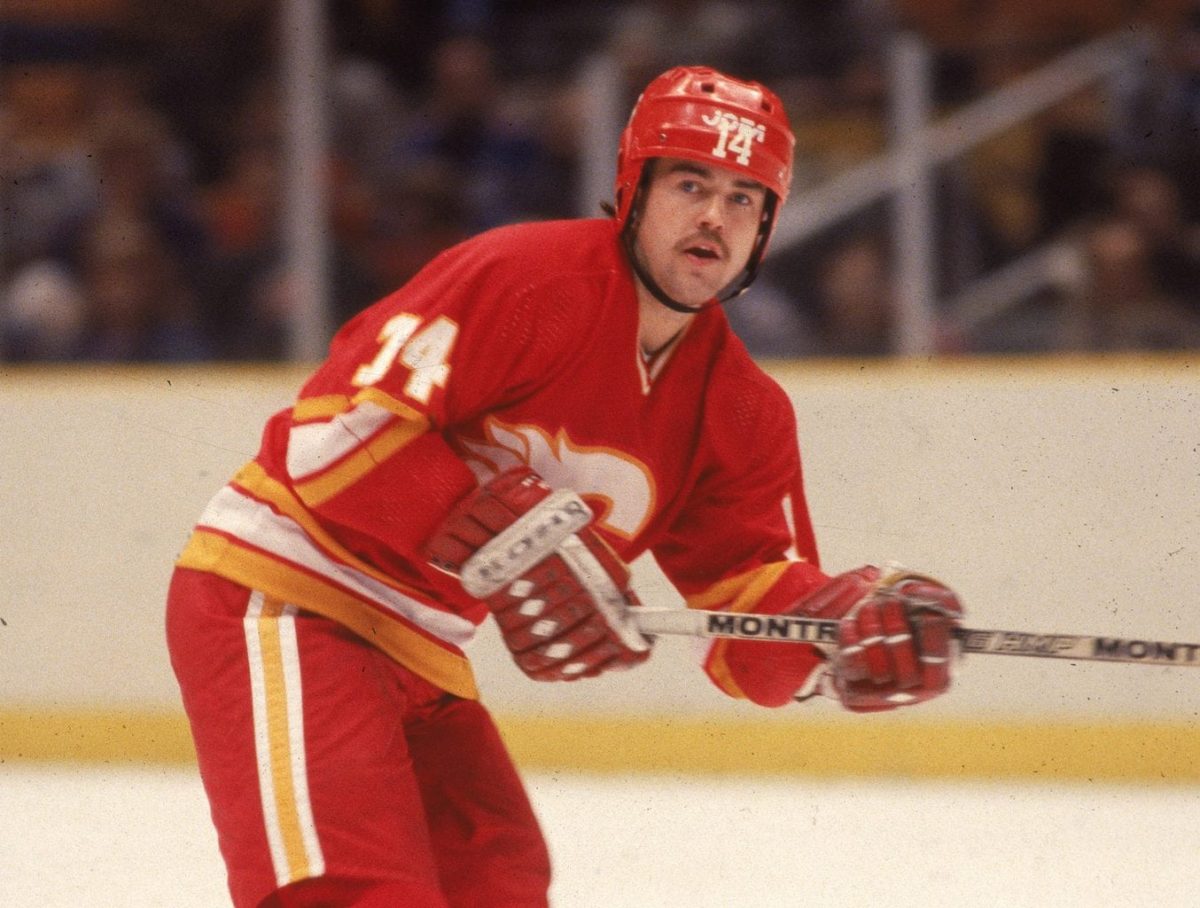
In the playoffs, which were a 1-16 format at the time, the Flames were the seven seed, and they swept Chicago 3-0 in the first round, but they were in tough against the Philadelphia Flyers in round two. A hard-fought series led to a game seven in Philly where the Flames won 4-1, advancing to the semi-finals, where the Minnesota North Stars were waiting. Despite such a successful regular season and playoffs up to this point, the Flames were unable to reach the Stanley Cup Final, as Minnesota was able to overcome the Calgary team.
So, while a largely triumphant first season, how does it compare to the relocated teams that followed?
The Devil Went Down to Jersey
While the Flames were the first relocated team of the 1980s, they weren’t the last, as the Colorado Rockies were sold to John McMullen and moved to New Jersey. Unlike the Flames, though, the Devils were in rough shape in the Patrick Division, which the league realigned in the previous season. New Jersey finished with a 17-49-14 record, 48 points and a fourth-place finish, which was not enough to qualify.
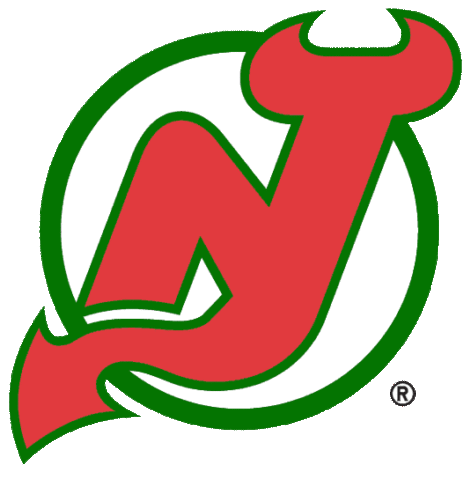
So why were the Flames able to transition easily in their new home while the Devils weren’t?
The biggest reason has to come down to the fact the Devils had no one near the same skill level as Nilsson. Without a superstar on their first roster, the Devils had to rely on rookie Aaron Broten and solid veteran Don Lever (who was also on the 1980-81 Flames’ team) to lead them. Both were the only Devils’ players to break the 50 point plateau.
Goaltending was also an issue, as Chico Resch was the main starter for the team and put up a .878 save percentage.
Stars in the Sky
After 23 years in Minnesota, the North Stars headed south to become the Dallas Stars in 1993. Like the Flames 13 years before them, Dallas came out with fire, as they were well above .500, finishing with a 42-29-13 record.
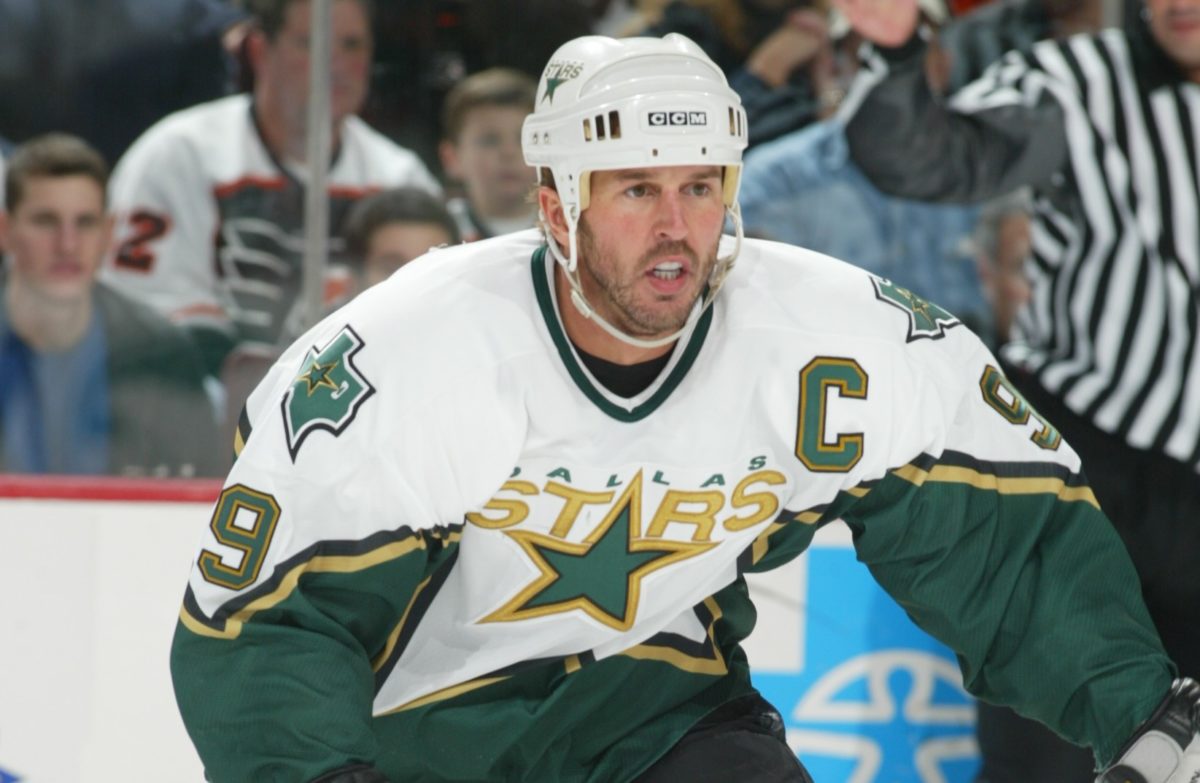
With former 1st overall pick Mike Modano rounding into form in his sixth season, the Stars were in good shape in the Central Division, finishing in third. Andy Moog started over half of the regular season games for a record of 24-20-7 and a save percentage of .894, with Darcy Wakaluk starting the remaining 36, posting an 18-9-6 record and a .910 save percentage. Along with Modano’s 93 points, the team also got a sizeable contribution from Russ Courtnall, who finished with 80 points.
With the Stars playoff-bound in their inaugural season in Texas, they faced a similar fate as the Flames, as they swept St. Louis in the first round. But unlike the Flames, they were unable to advance past the second round, as Vancouver easily dispatched them in five games.
Overall, the Stars’ roster in 1993-94 was incredibly similar to the Flames, as they both had a top-end forward who led the way offensively and a solid team behind them. While the Flames needed eight seasons to win a Stanley Cup in Calgary, Dallas finished that feat quicker as they won their first and only cup in the 1998-99 season.
Noridques Hit by Avalanche
Out of all the teams that relocated after the Flames in 1980, none were better set up for long-term success than the Quebec Nordiques, who moved to Colorado to become the Avalanche. After financial problems cropped up in Quebec City, the team was sold and moved to Denver for the 1995-96 season.
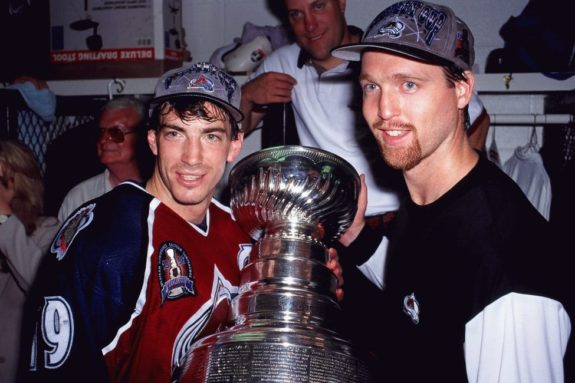
With Joe Sakic, Peter Forsberg upfront, and Patrick Roy joining the team in December from Montreal, they were a juggernaut in the Pacific Division.
After finishing with a division-best record of 47-25-10, they fired off three straight 4-2 playoff series wins against Vancouver, Chicago and Detroit. Heading into the Final, the Avs were looking for their first championship, and from the east, the Florida Panthers were in their first Final appearance. Despite strong goaltending from John Vanbiesbrouck in three of the four games, Roy was better, and the Avalanche were able to sweep away the Panthers and win their first cup.
So while the Avalanche obviously experienced a much better ending than the 80-81 Flames, they were still about fairly close. The biggest gap has to be the fact Colorado had one of the all-time great goalies in Roy, while the Flames were relying on Lemelin and Riggins.
Jets Fly to Phoenix
Despite backlash in Winnipeg, the Jets flew into a hangar in Phoenix and emerged as the Coyotes for the 1996-97 season. One year removed from the Avs winning a cup in their inaugural season, the Coyotes may have sported some of the best sweaters in the league, but they were far from Stanley Cup contenders like Colorado.

Having Keith Tkachuk, Jeremy Roenick, and Nikolai Khabibulin on the roster certainly helped, but they were a far cry from Sakic, Forsberg and Roy. Competing in the Central Division, the Coyotes were middle of the pack, finishing 38-37-7, which was good enough for their first playoff appearance in the desert.
The Coyotes fought hard in their round one matchup against the Mighty Ducks of Anaheim but fell short in Game Seven.
Considering there were five additional teams in 96-97 compared to 21 in 80-81, the Coyotes’ inaugural season could be looked at as a big success, much like the Flames. Both teams moved into divisions with fantastic teams, and they were able to not only compete but make the playoffs.
Whalers Run Into a Hurricane
And speaking of nice jerseys, the Hartford Whalers were no more come the 1997-98 season, becoming the Carolina Hurricanes. Subtracting New Jersey, most relocated teams to this point had good to great seasons, but the newly minted Hurricanes struggled in their first 82 games, going 33-41-8 and finishing last in the Northeast Division.
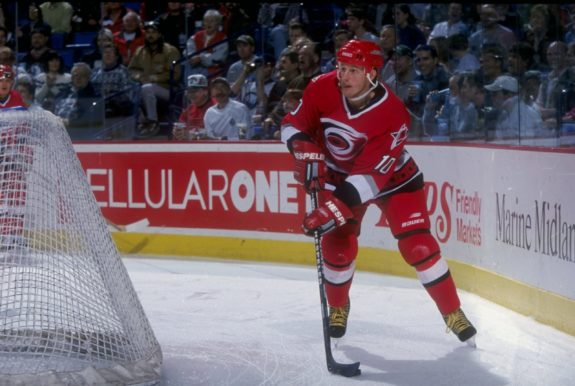
They had a bit of a goalie carousel for the season, as Trevor Kidd was solid in the pipes, posting a .922 save percentage in 47 games, while Sean Burke got 25 games, Kirk McLean had eight games, Pat Jablonski had five, and Mike Fountain played in three. Unable to qualify for the postseason, the Hurricanes’ first season can hardly be considered as successful, especially in relation to the teams that came before them.
Jets Return Home
The most recent team to switch locations is, of course, the Winnipeg Jets, who made a glorious return in 2011 after 12 seasons as the Atlanta Thrashers.

With Atlanta losing a team once again, Jets’ fans were finally able to cheer for their team again after a 15-year window. But their inaugural season had much more inline with the Canes than the Avs or the Flames.
As realignment had yet to happen, the Jets took over for the Thrashers in the Southeast Division, where they finished with a 37-35-10 record, which was only good for fourth in the division.
While no Winnipeggers were whiteout bound for the playoffs, I highly doubt many were all that upset. They had their team back, and the Thrashers team they inherited was far from a world-beater.
Stacking Up
So how does the Flames’ relocation season stack up compared to the six teams that followed? I think it’s safe to say they only trail the Avalanche’s in the success department.
Looking past Colorado, the Flames had the best overall inaugural season of any of the five relocated teams, as they were the only team to get past the second round. While Dallas had more regular-season wins, everyone knows the big games measure success, and the Flames were able to win more in the playoffs.
And sure, they definitely benefited from having fewer teams in the league up to that point. But the pressure in moving to a new city is immense — especially moving from a southern American market to a rabid, hockey-loving city like Calgary.